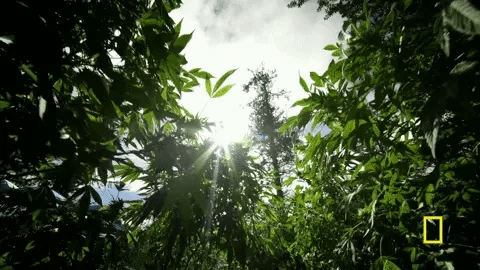🏹✨The Nexialist #0137
penthesilea: amazon queen | why amazon? | nature disconnection | shinrin-yoku | literal countries names | history of popcorn | iboru
welcome to another week of intertwining thoughts and bits, the nexialist
hey, you! i hope this message pops safely into your inbox and brings some brainsparks to kickstart your day. today it’s independence day in brazil, so expect some brazilian content (but nothing out of the ordinary). i’ll leave you to it, because it’s the last days of sun here, so i better enjoy! keep reading… 🫀✨
1 year ago » 🧋✨The Nexialist #0085 : AI: Engines for the Imagination? | Methexis in Darkness | Philistinism | Meta-text Consumption | Status Struggles | The Fluid Self | Niche Nets | Bronfenbrenner's Bioecological Model
2 years ago » 🌞✨The Nexialist #0036 : Forró of Chromatica | Kaleidoscopic Pop | Streisand Effect | Deepfake Aesthetics | Cinematic Concert Experience | More Jungle | Regarde-moi and more
❤️🔥penthesilea: amazon queen
last week i went with my dutch course classmates to watch heinrich von kleist’s penthesilea, directed by eline arbo. i was quite impressed and touched by the modern take on this greek tragedy. the actors were multitalented and also played some pop/rock hits as a band. also, the way they portrayed gender added a whole other layer, as both achilles and penthesilea, the amazon queen, present more androgynous and flipped societies’ expectations of gender. if you have the chance, enjoy it!
Kleist knows how to translate the age-old conflict between man and woman into a moving love story with complex characters. The meeting between Penthesilea and Achilles plunges them both into an existential crisis. She represents a hopeful, new form of love. And yet they fail to get together. They underestimate each other, and the consequences are horrific. The play is therefore more than a story about the difference between man and woman. It reveals how we internalise the norms and values of our own culture. Kleist wrote a dramatic piece with a tragic ending. But the real tragedy is that in the society Penthesilea and Achilles live in, there is no room for their version of love. — Eline Arbo, director.
🏹why amazon?
when you think of the word amazon, what comes to mind? to me it’s the rainforest. for some people it’s jeff bezos’ empire. for some people it might be ancient greek mythology. anyway… pentheselea got me wondering why/how/when the amazon rainforest got its name, so i had to look it up.
On June 3, 1542, the expedition reached the mouth of a black river, which they called the Rio Negro (near modern-day Manaus) – a name that survives to this day. It was here that the Amazon association began – when Orellana’s men encountered a tribe who erected giant jaguar totems in homage to their rulers, who they said were a tribe of fierce women. Orellana referred to them as Amazons – after the legendary female warriors of Asia Minor written about by Herodotus and Homer.
Further downstream, they were attacked by a dozen of these South American Amazons (probably Tapuya), whom Gaspar de Carvajal, the expedition’s chronicler, described as “very white and tall, with very long hair braided and wound about their heads. They are very robust, and go naked with their private parts covered, and their bows and arrows in their hands, doing as much fighting as ten Indian men.”
i think it’s quite powerful that the region has this name: it’s a reminder that women guarded and still guard the forest, of the feminine strength and resistance that the world needs to go into the future. also it made wonder about the name(s) the rainforest had before european invaders baptized the region.
brainsparks: how to be a good ancestor (tn#18), amazonize the world (#74)
🌳nature disconnection
for me it’s obvious that as a society we have lost touch with nature. in this article pelin kesebir and selin kesebir measure nature disconnection through a clever lens: cultural production. they checked for nature-related word mentions in pop culture (fiction books, top 100 songs and movie storylines) since the start of the 1900s (in english). the results were quite interesting, as the decline actually starts after the 1950s. when trying to figure out for the source of this the ecological divide, the urbanization movement was not the villain, as its increase does not coincide with the 1950s mark.
“Instead, our findings point to a different explanation for our disconnection from nature: technological change, and in particular the burgeoning of indoor and virtual recreation options. The 1950s saw the rapid rise of television as the most popular medium of entertainment. Video games first appeared in the 1970s and have since been a popular pastime, while the Internet has been claiming more and more leisure time since the late 1990s. It stands to reason that these technologies partially substituted for nature as a source of recreation and entertainment. Classic paintings such as Winslow Homer’s Snap the Whip (1872) or Seurat’s Sunday Afternoon on the Island of La Grande Jatte (1886) point to a time when children played in wide open green fields and adults spent their Sunday afternoons in nature.”
this was published in 2017, before the pandemic. i wonder what the results would show up to today. it’s interesting because recently on tn#117 i noted how natural themes have been popping up in music, so there might be already a counter movement guided by artists (who predict things quite well (tn#1).
via
brainsparks: slugs of love (tn#117), the beasts, these darlings (tn#128), solar power (tn#38)
🌿shinrin-yoku
this week, two unrelated people used this term (or its english equivalent, forest bathing) in their stories, so of course i had to bring it here, as it fits like a glove. it also serves as a reminder for me to do this more often, as it has so many clear benefits.
This is not exercise, or hiking, or jogging. It is simply being in nature, connecting with it through our senses of sight, hearing, taste, smell and touch. Shinrin-yoku is like a bridge. By opening our senses, it bridges the gap between us and the natural world.
🗺️literal countries names
this infographic appeared a few weeks ago on reddit (you can find close-ups by continent in the visual capitalist), and the colonial roots of the names, which are still used today, stood out for me, such as “little venice” for venezuela. brazil was based on the first big export of the country:
Brazil’s name is actually shortened from Terra do Brasil (land of Brazil). The brazilwood tree, or pau-brasil, was valued highly in the early 16th century. It was used to produce red dyes for the European textile industry — hence the “red like an ember” moniker.
🍿history of popcorn
since my friend gustavo told me popcorn is an ancestral snack from latin america, it changed how i see this popular snack (so absurdly marked-up at most theatres today). and this is a video i didn’t know i needed: not only its history but actually what happens inside the corn when it’s popping. grab some popcorn and enjoy (if you’re like me, you’ll finish it before the end of this five minute video)
But how did we actually end up with this whimsical food? All the corn eaten today is derived from a tall grass called teosinte, which Indigenous people in what is now southern Mexico began selectively breeding about 9,000 years ago.
👁️mau
jaloo just released a new single and i’m obsessed with it. “it’s about being an animal, not putting yourself in the center of everything. we are just one more in the middle of all this nature.” i got a naughty psychoanalytical vibe, about vices and again, the ecological devide.
Mau, Mau | bad, bad
Noiz é animal | we are animal
Cê nem sabe o que é ser gente | you don’t even know what being a person is
Então engole meu p* | so swallow my d***
(Por quê?) O superego não controla você | (why?) the superego doesn’t control you
(Por quê?) Nois ta vivendo em troca de prazer | (why?) we are living in exchange for pleasure
🇧🇷iboru
marcelo D2 released some visuals for his latest album, and this movie is just incredible. unfortunately there are no subtitles in portuguese or english, but still it’s beautiful to watch. he starts saying: what i propose here is an ancestrality of future, where rap and sampa meet up again, but now in samba’s terreiro, where things happen. the new traditional samba…” the video is an homage to samba icons clementina de jesus, joão da baiana and pixinguinha (tn#48) and show the resistance that samba (and other african diaspora music) goes through in brazil, from being criminalized and persecuted. i was hypnotized.
brainsparks: ailton krenak’s ancetral future (tn#112), the future is ancetral (tn#124), iboru (tn#128), beat diaspora (#125)
see you next week!🫀
❓If you want to know what a Nexialist is, click here.
🔎If you want to see what I’ve already posted, visit the archive and use the search engine. Even I do that a lot.
💌I want to know what you think/who you are! Your feedback is highly appreciated; you can e-mail me or fill in this short survey. Thank you! 🙏🏻
🔌Let’s Collab?
I truly believe innovation comes from bringing improbable areas together, and that’s why I called this project The Nexialist. Some sectors are known to be self-referencing and hermetic. Sometimes teams are on autopilot mode, focused on the daily grind, which hinders innovation. As a Nexialist, I like to burst these bubbles, bringing references from different areas, and maintaining teams inspired and connected to the Zeitgeist.
I offer inspiration sessions called Brainsparks, creative desk research (Zeitgeist Boost), Plug’n’Play deals for workshops and sprints, and other bespoke formats. If you want to know more about this, send me an e-mail with your challenge(s) and we can figure something out together. Check out my website and some work I’ve done below:









